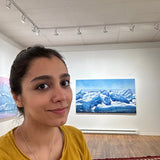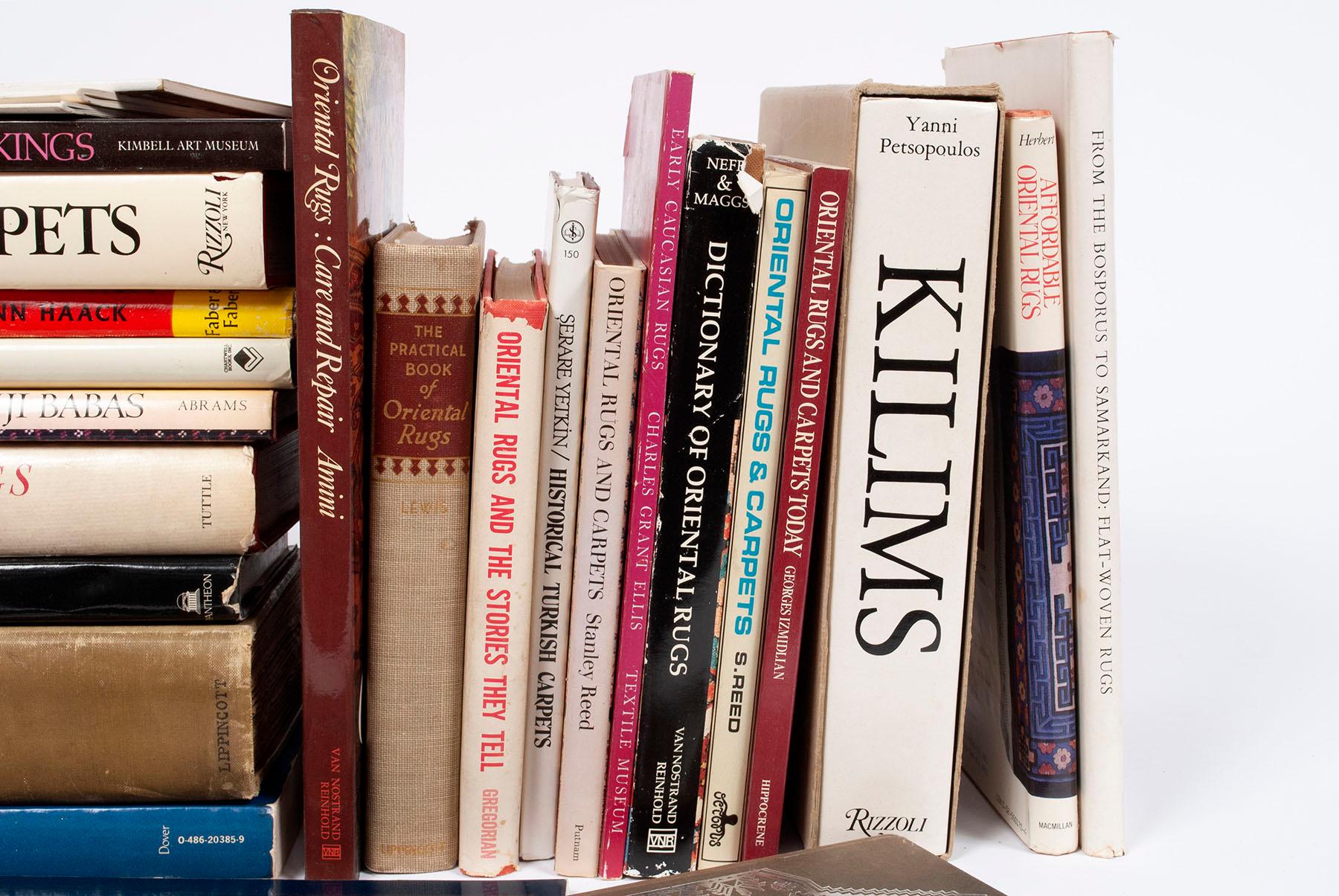The Qashqai are a confederation of nomadic tribes in southwestern Iran, celebrated for their cultural heritage and stunning rug weaving.
Qashqai rugs are among the most prized Persian tribal rugs, known for intricate designs, deep natural dyes, and free-spirited artistry.
In this guide, you will meet the Qashqai people, see what makes their weavings unique, and learn how to identify a genuine Qashqai piece with confidence.
The Life of the Qashqai Tribe in Fars
To appreciate Qashqai rugs, it helps to understand the world that produced them. The tribes roam the Fars province of Iran, a landscape of rolling pastures, the Zagros mountains, and fertile plains.
They are pastoral nomads who migrate seasonally between highland summer pastures and winter lowlands. This cyclical movement, known as transhumance, shapes everything from tent design to textile needs.
Imagine spring caravans moving along dusty paths. Men riding or walking, women in vibrant layered skirts guiding pack animals stacked with rolled black goat-hair tents called khadeh, children clambering nearby, dogs managing the flock.
When camp is set, the ground is covered with handmade rugs and kilims that insulate and warm the tent. From their own flocks, Qashqai families spin lustrous wool for saddlebags, trappings, flatweaves, and pile rugs used daily for sitting and sleeping.
Many pieces are woven for dowries or to mark life events, which is why motifs often feel personal and symbolic.
Motifs That Mirror Nomadic Life
The Qashqai world is woven into their carpets. Animals such as sheep, goats, horses, camels, and sometimes lions appear in stylized geometric form. Trees and flowers evoke cypress, palms, and the flora along migration routes. Stars and sky devices echo the night canopy. Human figures may appear as brides, hunters, or legendary heroes.
Living among the ruins of ancient Persia, some Qashqai pieces even echo Persepolis with winged creatures or pillar-like forms. Designs are composed from memory rather than paper cartoons, which gives the work spontaneity, variation, and the charming asymmetry collectors love.
The History of Qashqai Carpets and the Shiraz Market
Qashqai origins are mixed, with Turkic-speaking groups merging with indigenous Persian and Arab elements over centuries. They have been in the Fars region since at least the 16th–17th centuries, and maybe earlier. Their carpet weaving tradition developed as a nomadic necessity turned art form.
While rugs were woven by many tribes, the Qashqai quickly gained renown for theirs. By the 19th century, Qashqai rugs were traded in bazaars of Shiraz and found eager buyers from abroad.
Unlike city rugs, these weren’t workshop products – each was unique to a family or sub-tribe. But their quality of wool, richness of colors, and attractive patterns made them highly desirable.

Old photo of a Qashqai tradational market
Shiraz itself does not usually produce carpets. Instead, “Shiraz” rugs on the market often refer to Qashqai or other Fars tribal rugs sold through Shiraz. Indeed, Shiraz has for long been a trading center for tribal weavings (including those of Qashqai, as well as Khamseh confederation rugs, etc.).
So if you see an antique “Shiraz” rug, it’s likely a Qashqai or related tribe’s work, characterized by similar traits.
Within the confederation, sub-tribes such as Kashkuli, Amaleh, Shishbuluki, and Darrehshuri developed recognizably fine variants. For example, Kashkuli Qashqai rugs are known to be extremely finely woven, sometimes with more curvilinear designs; they were a sub-tribe famed for high quality.
As time went on, Qashqai weavers in the 20th century also wove for commerce, meaning they might incorporate popular motifs known to sell. Yet, they largely preserved authenticity.
The Qashqai have faced pressures to settle over the 20th century (especially during Reza Shah’s era in the 1930s there was forced settlement, later undone), but many still maintain aspects of the nomadic life.
Rug weaving remains a proud part of their culture, though now often done in village settings rather than on the move.

Vakil Bazaar of Shiraz
The Signature Medallion Language
The best characteristic for identifying Qashqai carpets is the central medallion design, which resembles a four-armed, turning creature. The original and most authentic medallion in Qashqai carpets is diamond-shaped, with round and square medallions being rare.
The common rule for the arrangement of medallions is based on odd numbers: small carpets have one or three medallions, and larger carpets have five or seven.

Qashqai Rugs in the Bazaar of Shiraz
Four Design Currents You Will Encounter
Qashqai carpet designs can be divided into four categories:
Asymmetrical figural compositions.
This category features designs where the main characteristic is the lack of symmetry in details, except in the general layout of medallions, corner designs, and the main border. The motifs are geometric and broken, and the designs are often spontaneous.

Gabbeh weavings.
Gabbeh rugs are thick-piled, minimalist Qashqai and Luri textiles originally made for family use as sleeping rugs. Fields may be a single glowing color with a few whimsical motifs such as a pair of figures, a camel, or a tree. Improvisation is at its peak here and natural dyes give a modern-meets-ancient feel.

Read more about Persian Gabbeh rugs
Pictorial and historic themes.
Qashqai rugs with pictorial or “photographic” designs are not common, but they exist. For instance, in mid-20th century some Qashqai weavers wove rugs depicting Persepolis or other Iranian historical scenes (perhaps encouraged by Pahlavi nationalism). Also, scenes like a lion with sword (symbol of Persian monarchy) or portraits of kings.

Lion rugs.
The lion is a significant motif in many Persian tribal rugs, especially among the Qashqai and the Lori, whose rugs often had lion and sun, or lone lion images to honor tribal heroes or just symbolize bravery.
One famous type of Fars lion rug is called “Gabbeh-ye Shir” (lion gabbeh) – often a relatively plain gabbeh with a single lion. Highly collectible now.
Materials, Looms, and Knotting That Define Qashqai
Traditional looms are horizontal ground looms staked to the earth, practical for a mobile life, though some settled weavers use vertical looms.
Older pieces are wool on wool, including warps and wefts. Later village work may introduce cotton warps for strength.
The knot is most often the asymmetric Persian knot. A moderate knot density, combined with wool foundations and one or two wefts, produces a supple handle and visible abrash, the natural striation that appears when yarns dyed in different pots shift subtly in tone.
Ends sometimes finish with a short kilim section, and a distinctive checkered two-color band is common in Qashqai and neighboring Luri work. Selvages may be wrapped in multicolor barber-pole yarns or sturdy dark wool.

Color, Natural Dyes, and the Dooghi-Color Secret
Color is the soul of Qashqai weaving. Indigo produces midnight and sky blues. Madder root creates reds from brick to deep wine. Walnut husks give camel and brown. Yellows from plants such as vine leaves are overdyed with indigo to make greens.
A traditional trick softens madder reds by soaking dyed yarn in yogurt drink (doogh), creating a pastel salmon often called doughi color. Older pieces glow because of this palette and because abrash enlivens large areas.
Later commercial work sometimes used synthetic reds that can look loud when new; informed producers have returned to vegetal dyes for depth and harmony.
Why Qashqai Rugs Work In Modern Rooms
Despite their nomadic origin, Qashqai pieces are remarkably versatile. A triple-medallion rug anchors a living room without feeling formal. A small size warms a study or bedside. A lion Gabbeh becomes instant statement art. The mix of saturated reds, inky blues, camel, and dough-pink plays well with wood, stone, linen, and contemporary furniture. Layer a smaller tribal piece over a neutral ground to add texture and narrative without visual weight.

Sigmund Freud’s psychoanalytic couch, draped with a Qashqai rug, Freud Museum London.
Conclusion
Qashqai carpets are woven narratives of a nomadic culture. Each knot carries the rhythm of seasonal movement, the memory of campfires, and the practical beauty of textiles made to be lived with.
When you unroll a genuine Qashqai, you bring warmth, character, and a trace of wanderlust into your space. If this language of wool and dye speaks to you, feel free to browse our Qashqai and Shiraz rug collection below. You may find the Qashqai piece that journeys with you for years to come.




















Leave a comment